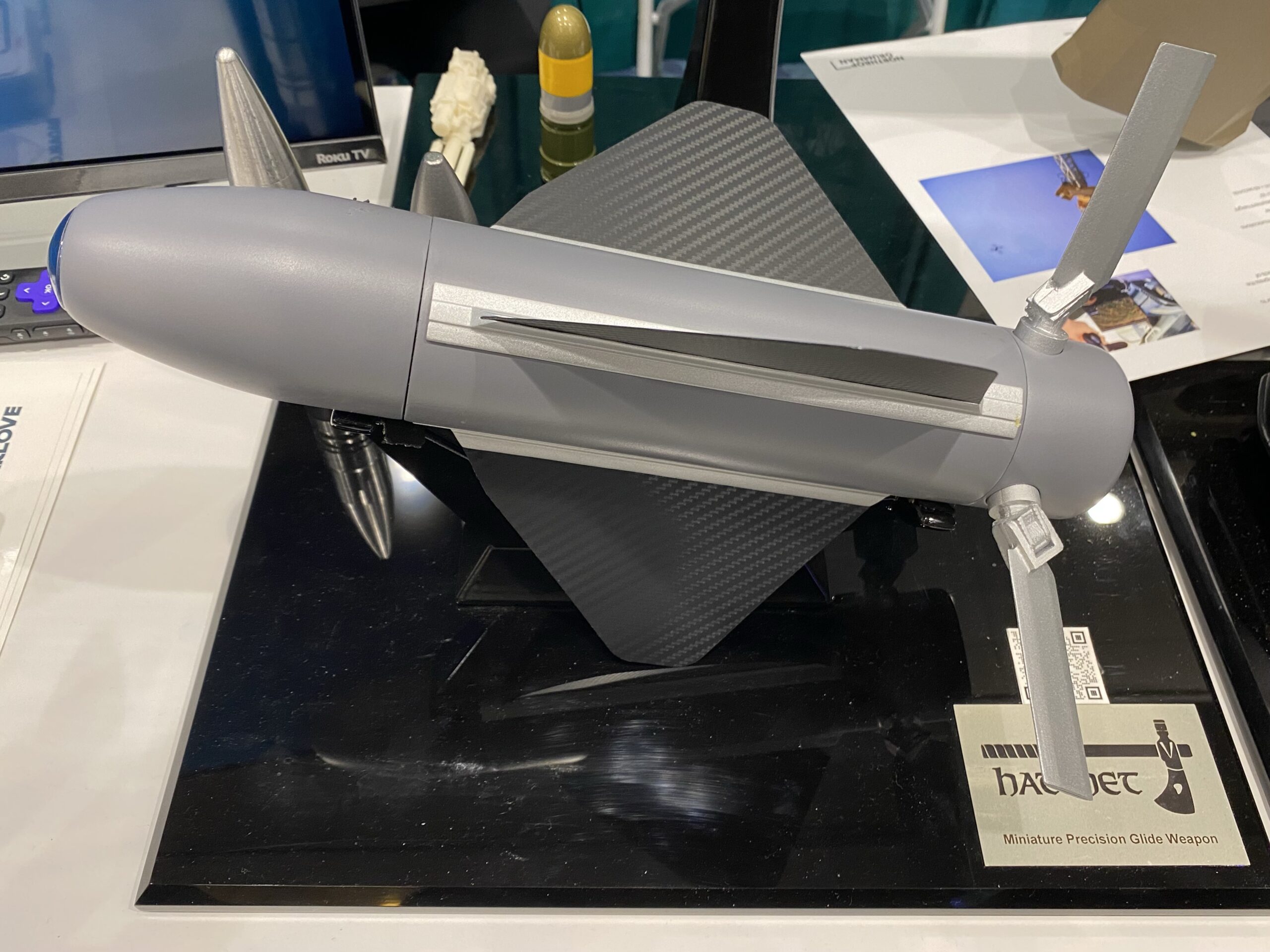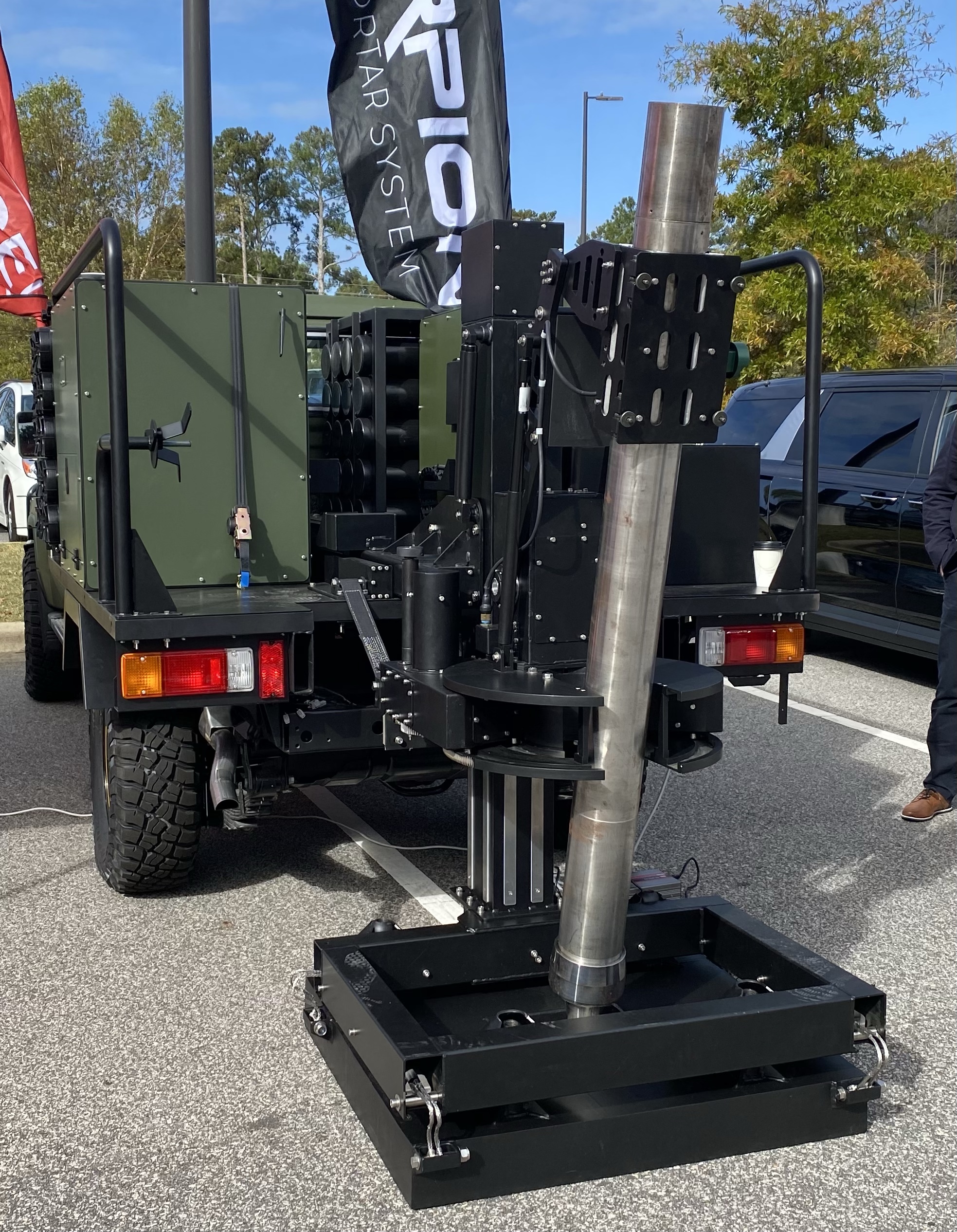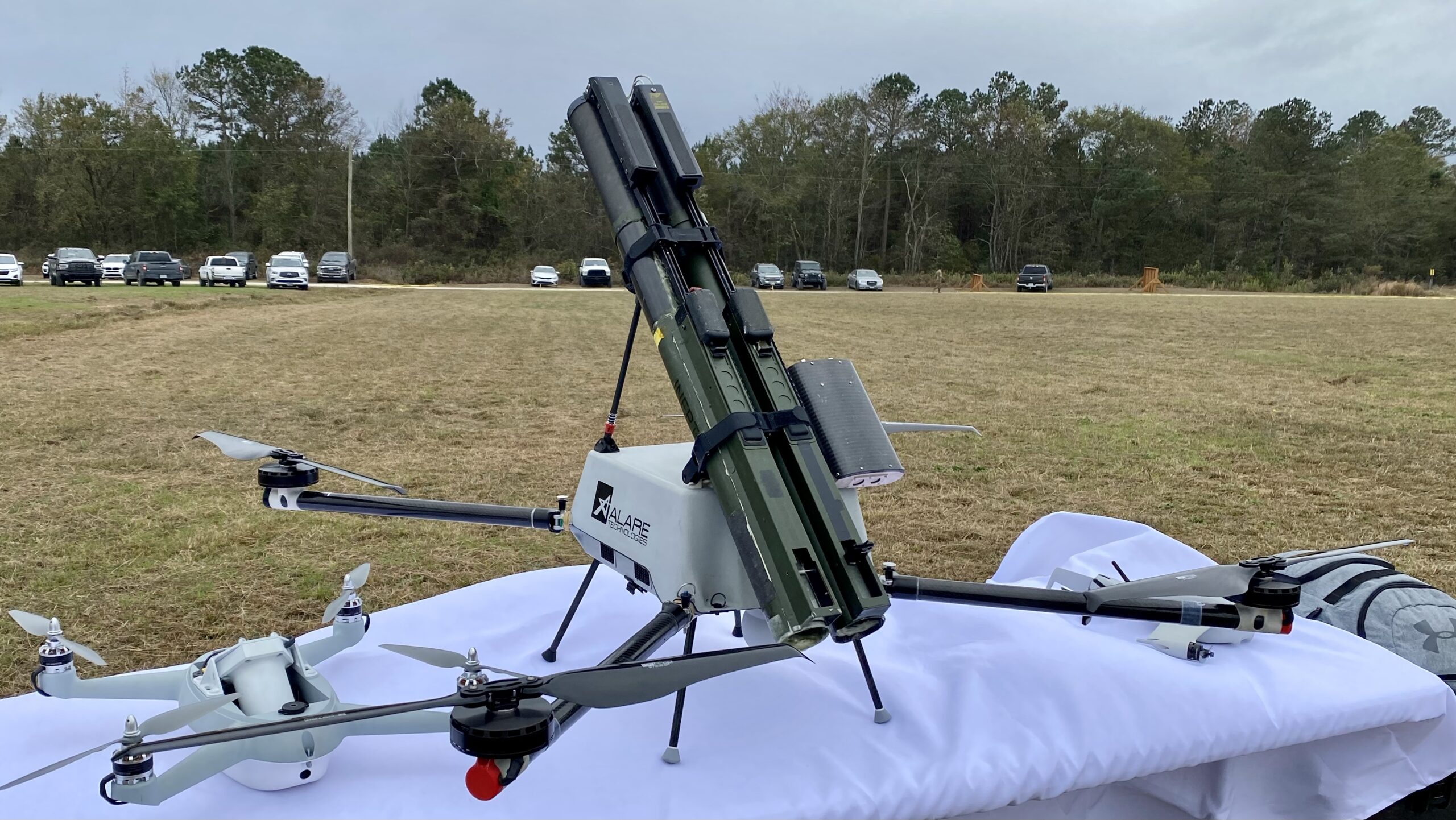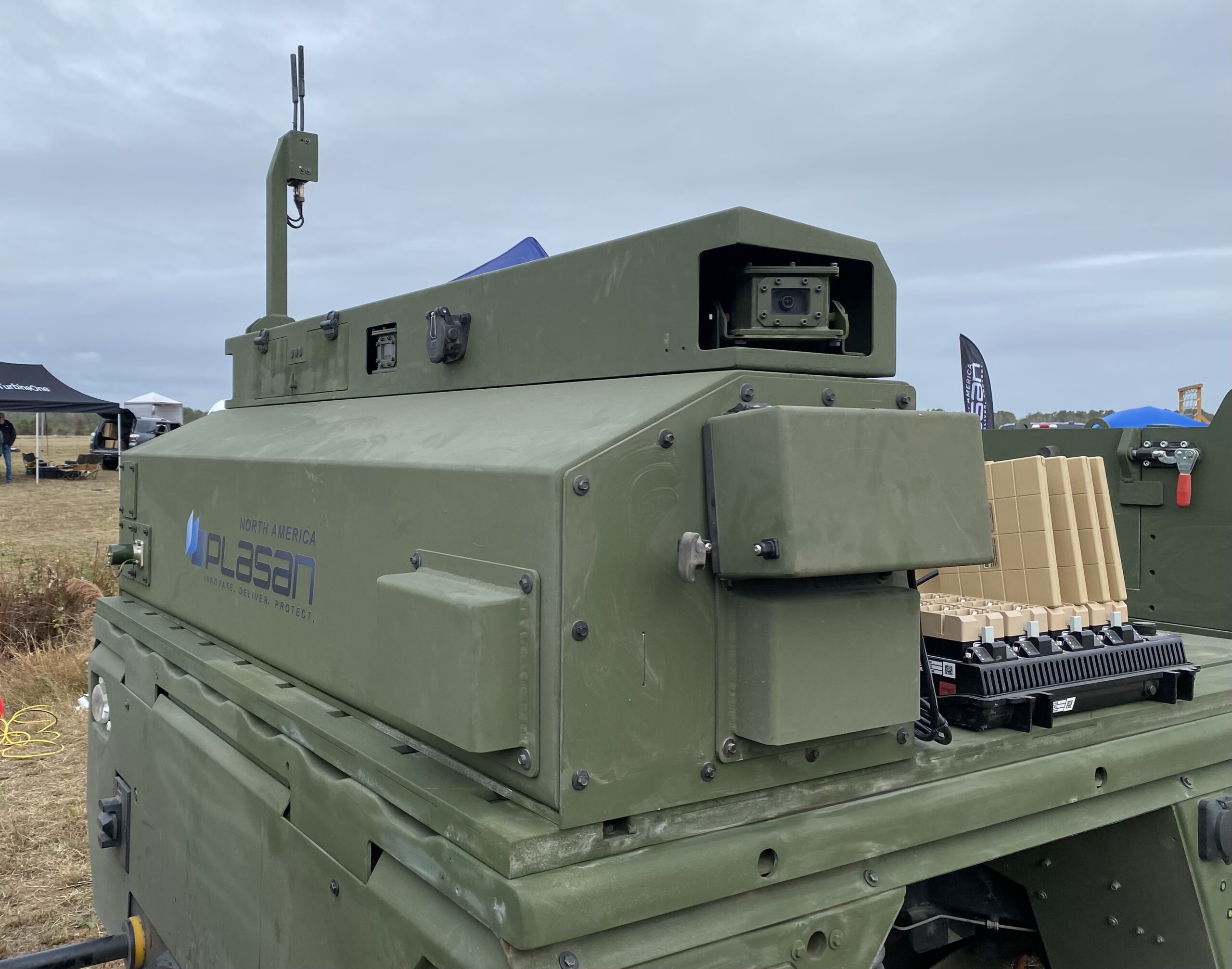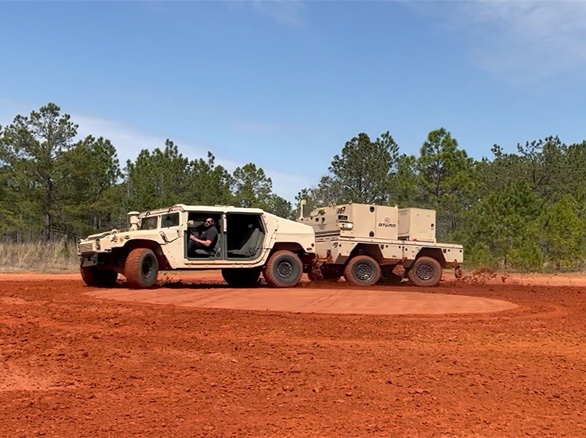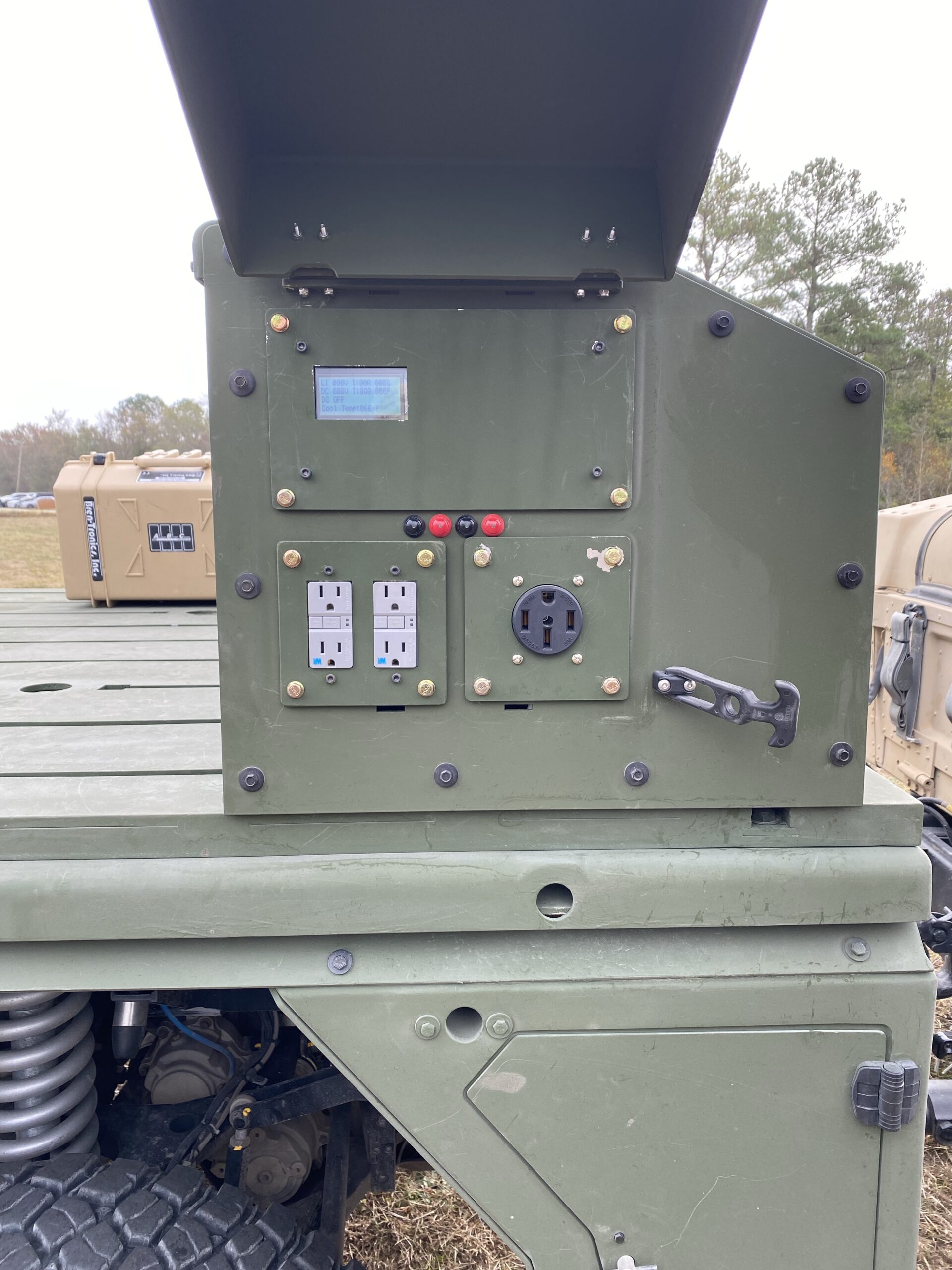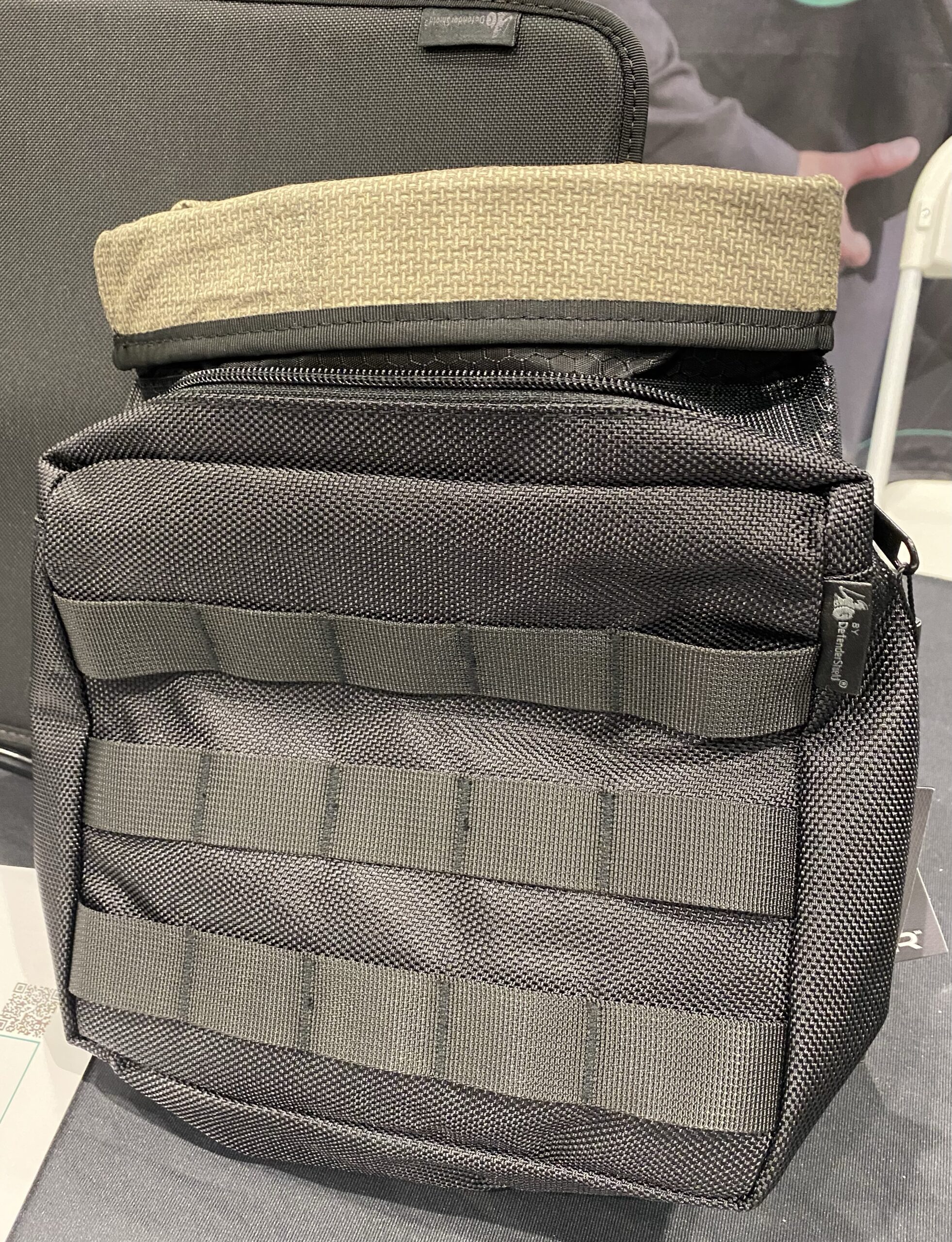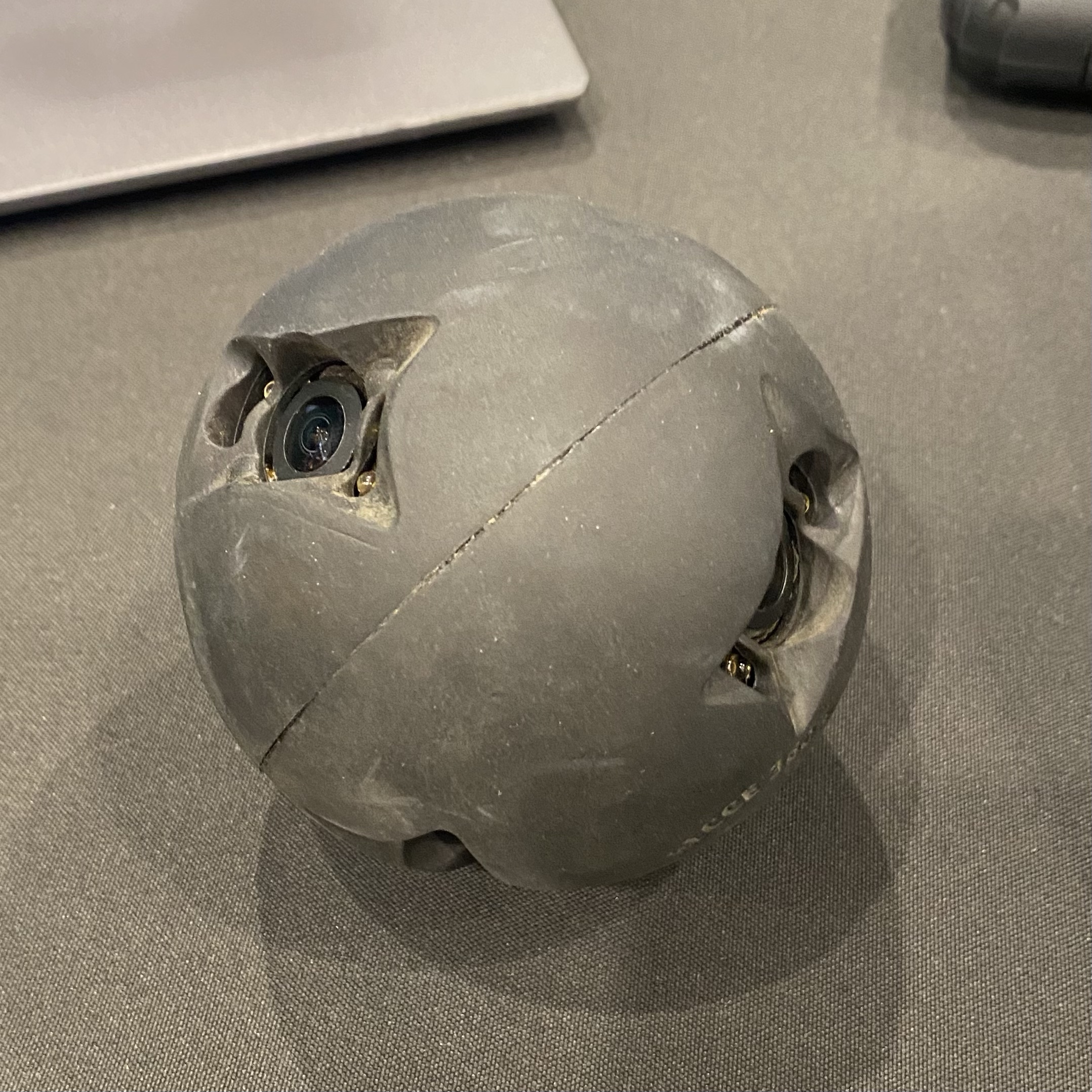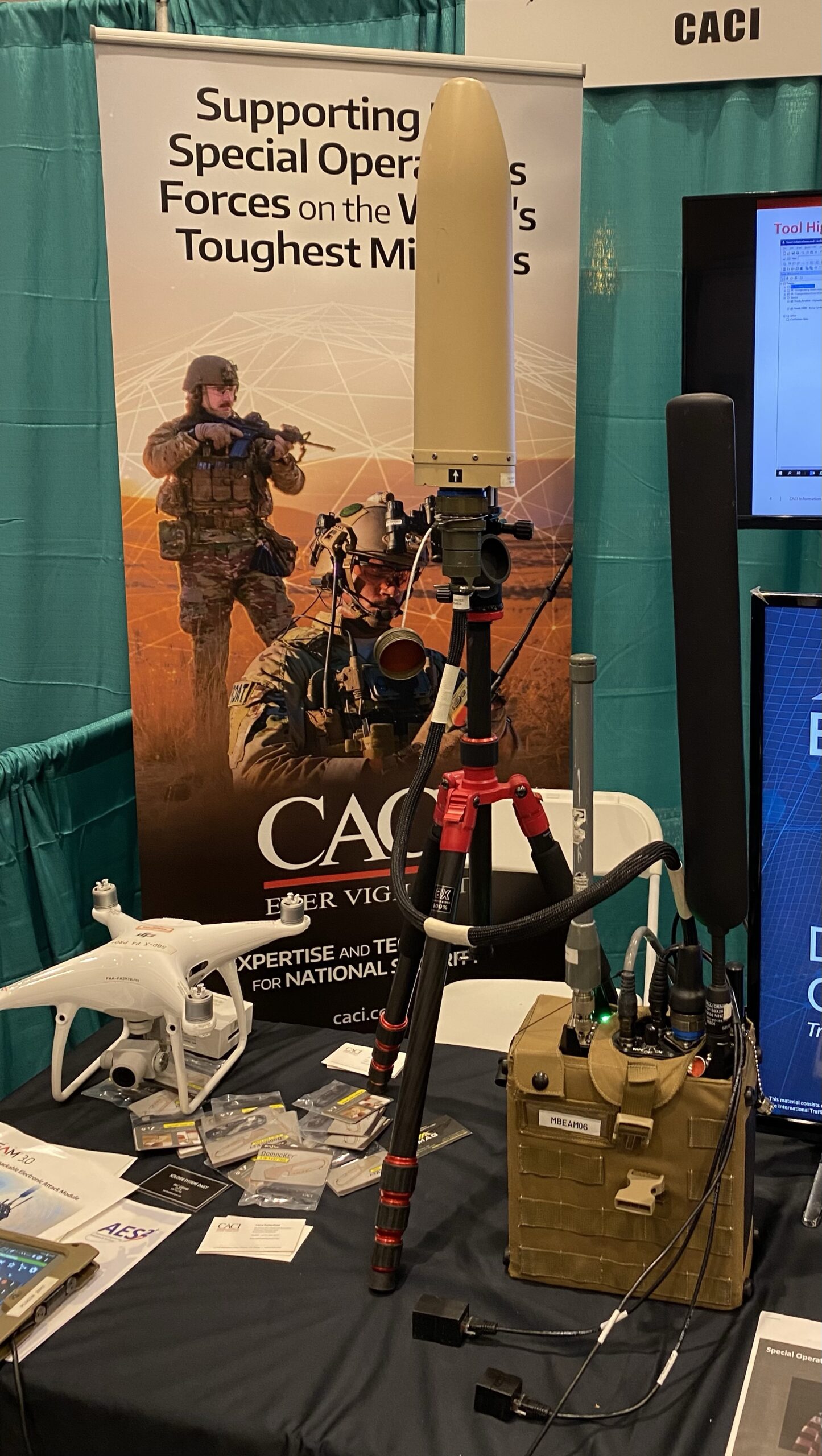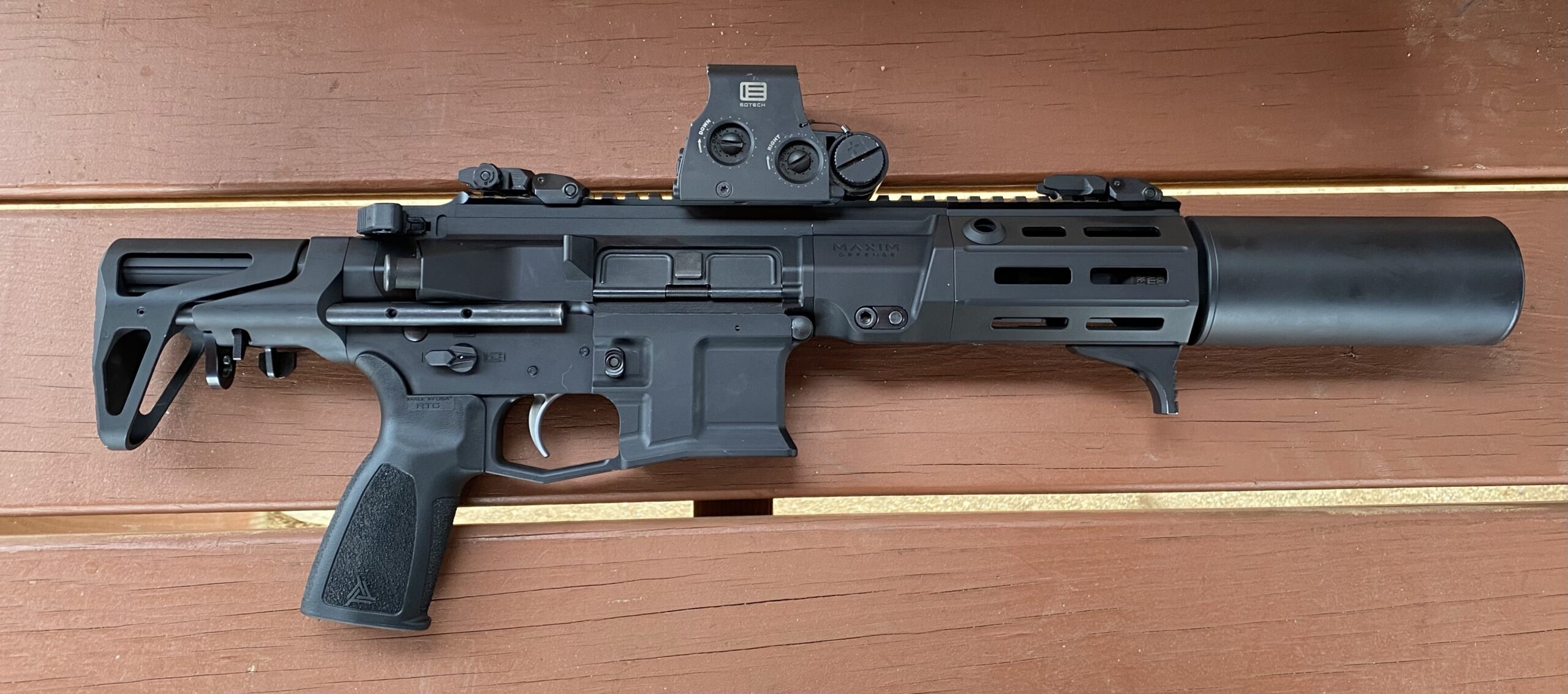
Maxim Defense unveiled their new PDX-SD to government and military customers at yesterday’s demo day portion of the Global SOF Foundation‘s Modern Warfare Week.
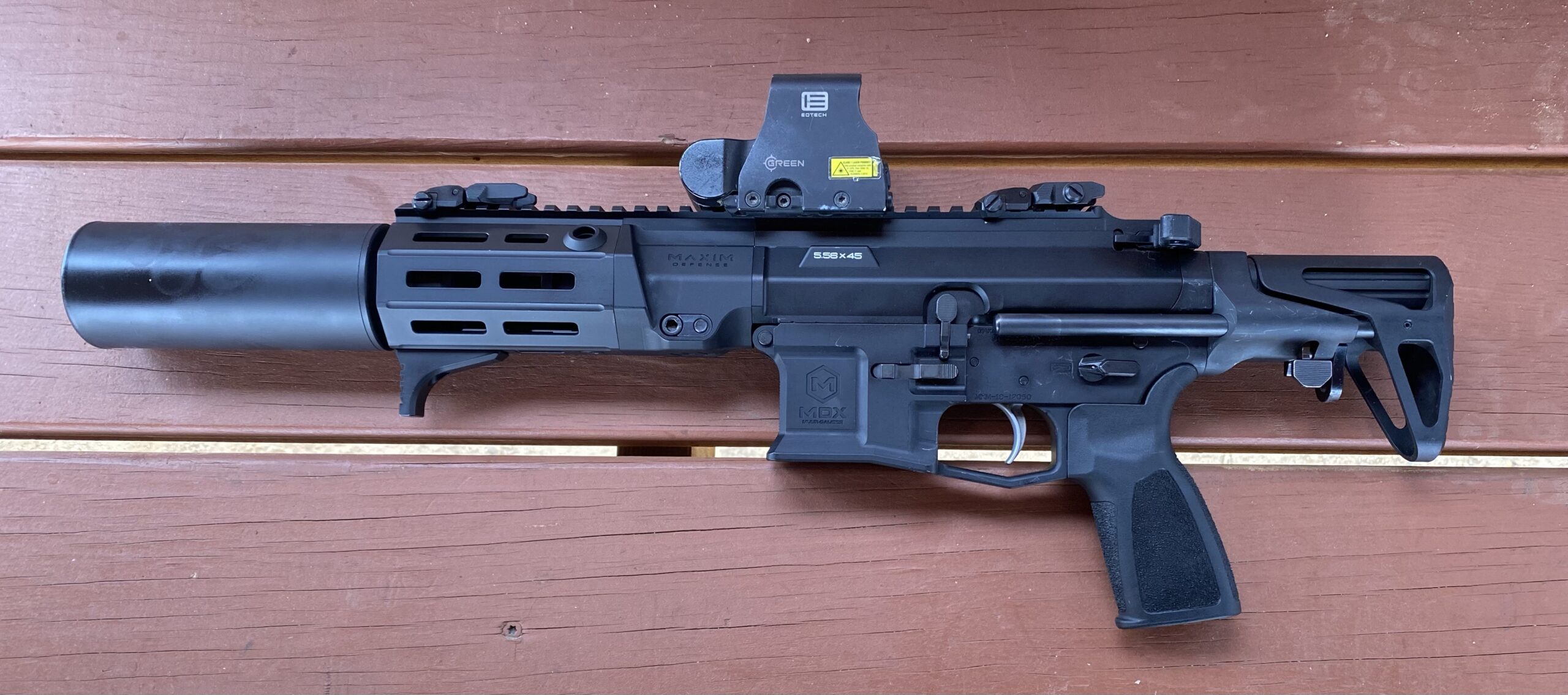
Chambered for 5.56 NATO, this personal defense weapon was designed around the suppressor which is hearing safe while firing M855, demonstrating 138 dB in testing.
This model features a 5.5” barrel and 23.75” OAL collapsed. The suppressor is 5” x 2.25”. While it’s short, they made it fat as well to create volume. It also incorporates their SCW stock to help with length.
The goal was to create weapons which are always suppressed. Consequently, the suppressor is the muzzle device. The outer tube of the suppressor comes off for maintenance. Additionally, as cores wear out, they can be replaced. Not only that, but cores can be upgraded as newer versions are created.
I had an opportunity to put a couple of magazines through the PDX-SD and while I wore hearing protection, I could tell it was definitely suppressed and I experienced no gas in my face which was very welcome.
Interestingly, they have found that the weapon is quieter shooting supersonic .300BLK ammunition than subsonic with this design.
With the launch of the PDX-SD, Maxim Defense is poised to become the first company to introduce an entire line of integrally suppressed carbines, in 5.56, .300BLK, and 7.62 x 39 with the SDX line and SD15.
The PDX-SD along with the entire line of Maxim suppressors and firearms will be available to the public for test firing at this weekend’s CANCON in Georgia.
